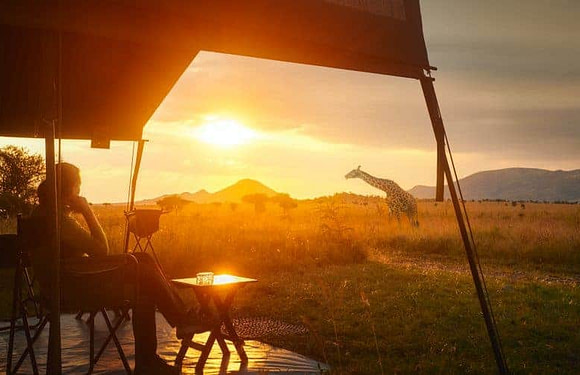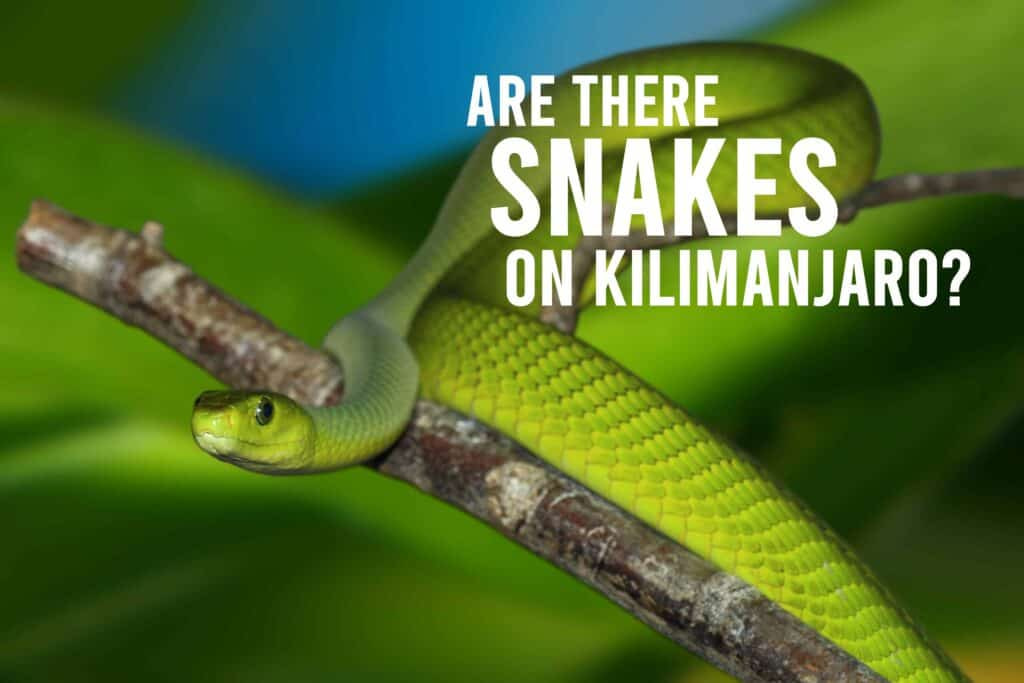
Yes, there are snakes in the cloud forest of Kilimanjaro. But do not fear. Sightings are extremely few and far between.
Because snakes are highly sensitive to movement, groups of enthusiastic climbers hiking the trails scare them away. They steer very clear of the trafficked areas, making it nearly impossible anyone would encounter a snake while climbing Kilimanjaro. Even most of our guides and porters, who are on the mountain year round, have never seen a snake on the mountain.
What kind of snakes live on Mount Kilimanjaro?
There are 52 snake species recorded in the general area of Kilimanjaro. The majority are in the surrounding low land areas around the mountain. Five of these are dangerous species that may be encountered in the lower forests on the mountain.
Let’s take a look at these snakes one by one.
Puff Adder
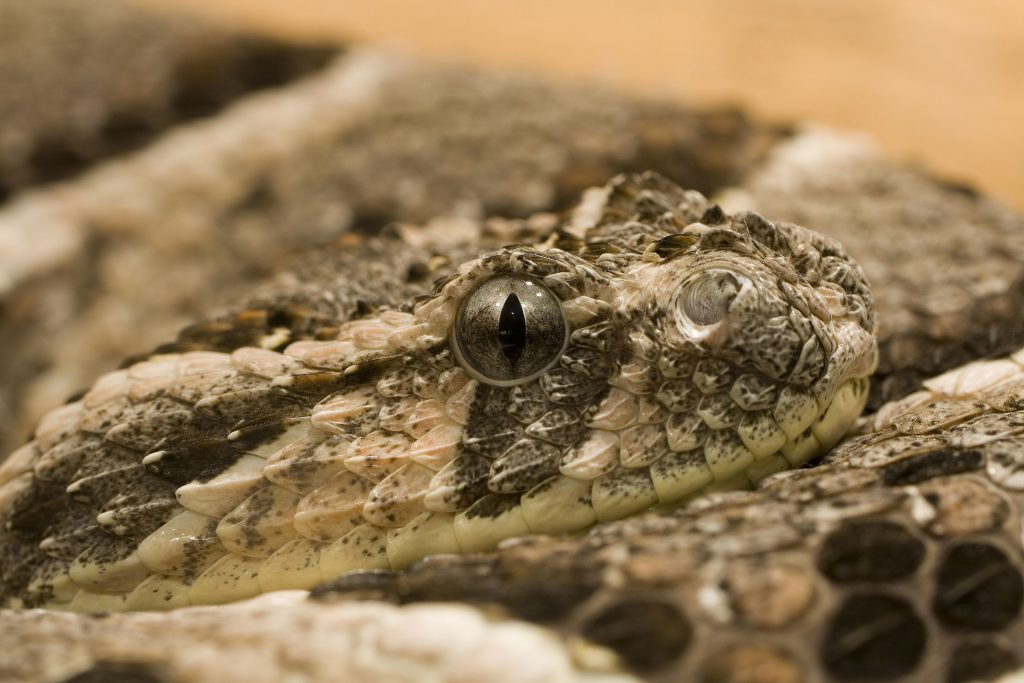
The Puff Adder (Bitis arietans), of the family Viperidae, is a master of camouflage, helping it blend perfectly with mottled leaves and dry grass in savanna areas.
Like all vipers, it is venomous. This snake has long fangs that may reach almost 2cm in length! They are well patterned with light chevrons down the body. They are very varied in colour from yellow to dull brown.
Adults average 70-110 cm (2-3 feet) in length and are very heavy and stout. A large female caught in Lolldaiga Hills, Kenya, measured 185 cm (6 feet)!
Puff Adders feed on various types mammals, birds, lizards and toads. There are even reports of Puff Adders preying on Dik-diks and small tortoises! Once they strike their prey, they release the prey and use their tongues to follow the scent trail. The prey succumbs rapidly to the potent cytotoxic venom.
Bites from this species are very common throughout Africa (but unheard of on Mount Kilimanjaro). The cytotoxic venom causes severe swelling and tissue damage.
Green Mamba
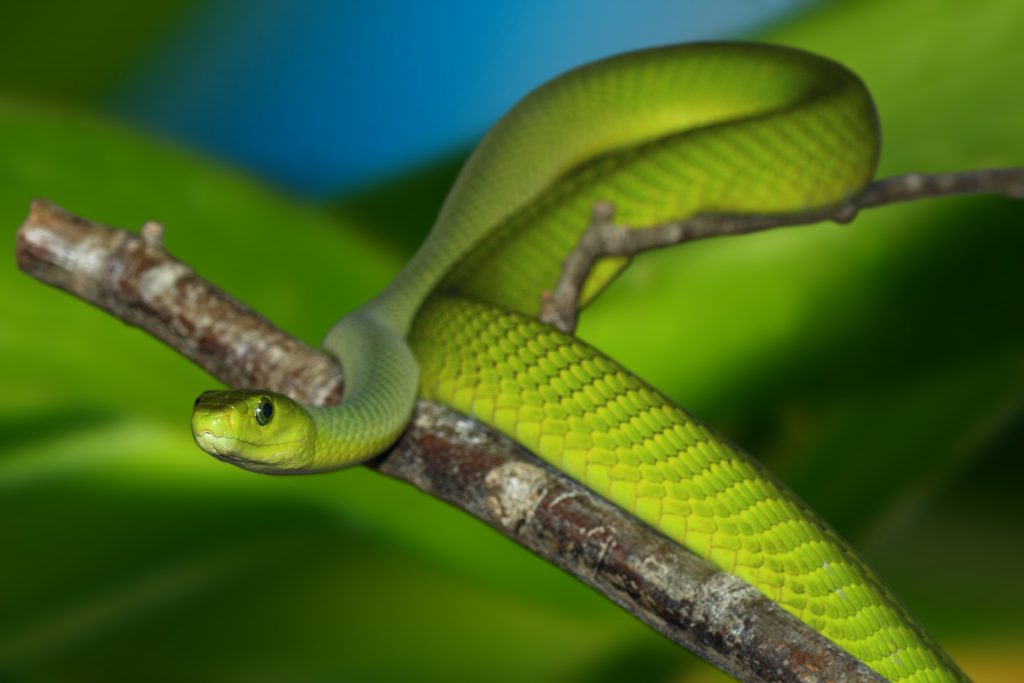
The Green Mamba (Dendroaspis angusticeps), sometimes called the Eastern Green Mamba, Common Mamba, or White Mouthed Mamba, is a substantially sized, venomous, arboreal snake of the family Elapidae. Females are longer than males averaging 2 meters (6.6 feet) in length versus 1.8 meters (5.9 feet).
Green Mambas have elongate heads followed by slender bodies and medium to moderately long tapering tails. Their relatively long fangs can rotate on their axis with the prefrontal bone giving more control over the movement of them. Bright green scales cover them dorsally, and pale green scales cover them ventrally. Sometimes, they have a few scattered yellow scales along their flanks.
Prey for this shy and elusive snake consists of birds, eggs, bats, lizards and various types of rodents. This agile climber’s green coloration provides camouflage amongst the trees and dense shrubs where it spends most of its time. They are not commonly found on the ground unless motivated by thirst, prey, or the need to bask in the sun. Diurnal by nature, they sleep at night in leafy clumps or an occasional tree hollow. Unlike it’s much larger, more aggressive Elapidae cousin, the black mamba, this mamba is nervous and shy.
Green Mambas avoid confrontation with humans or any other potential predator by relying on their camouflage
Green Mambas avoid confrontation with humans or any other potential predator by relying on their camouflage to remain hidden or using their abnormally fast slithering speed to flee. They can move up to 7 mph.
Boomslang

The Boomslang (Dispholidus typus) is a venomous, arboreal snake of the family Colubridae. Its common name means “tree snake” in Afrikaans and Dutch – boom meaning “tree” and slang meaning “snake.”
The average adult is 100-160 cm (3 1/4-5 1/4 feet) long with some specimens exceeding 210 cm (6 feet). Although long, they are quite light, weighing only 175-510 g (.386-1.124 lbs). They have an egg-shaped head and sizable eyes that provide excellent eyesight.
Males are shades of green with black, or blue scale edges and females are predominately brown. The juveniles (under 80 cm) are brown with a white chin and large emerald green eye.
Reclusive by nature, Boomslangs flee from anything too substantial to eat. During chilly weather, they have been known to curl up inside the closed nests of weaver birds to hibernate. Their primary diet consists of chameleons, tree lizards, fledgling birds and frogs. Occasionally, they catch small mammals, birds, and eggs, which they swallow whole.
Many venomous members of the family Colubridae are harmless to humans because their venom glands are small and their fangs inefficient. However, the Boomslang is a notable exception to this rule, producing hemotoxic venom that it delivers through substantial fangs located at the back of the jaw. They can open their mouths 170 degrees when striking. The good news is, they are timid snakes and bites don’t occur unless people attempt to handle, catch, or corner the animal.
Eastern Vine Snake
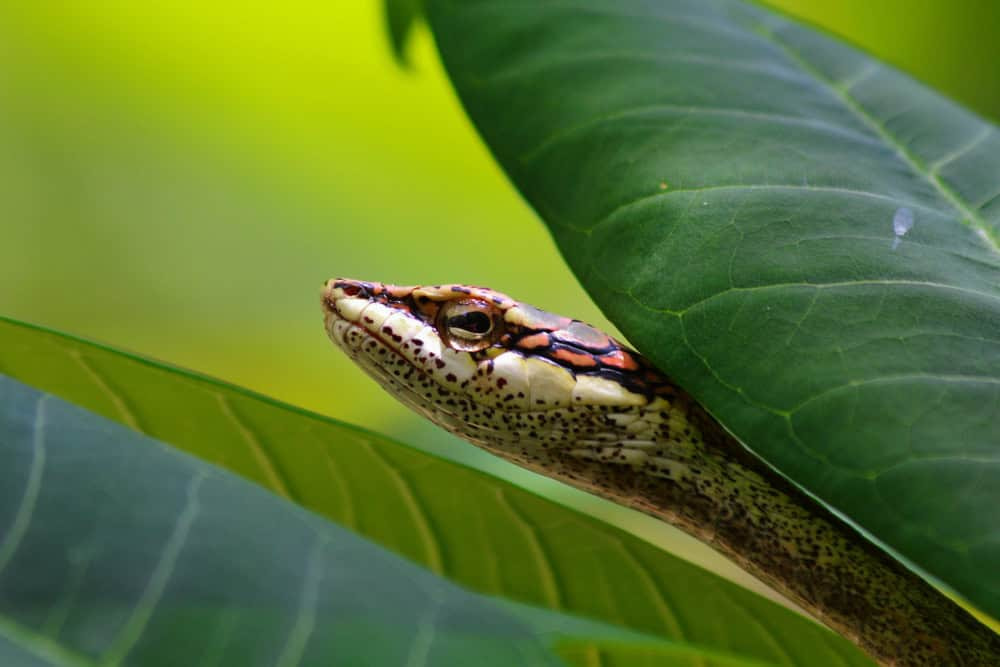
The Eastern Vine Snake (Thelotornis mossambicanus), also known commonly as the Eastern Twig Snake, is from the family Colubridae. They have slender, elongated profiles, long heads with pointed snouts, and long tails. Horizontal, keyhole-shaped pupils give them binocular vision. These snakes average 90 – 130 cm (3-4 feet) in length.
Twig snakes are greyish brown with faint light and dark markings, making them perfectly camouflaged vegetation. The top of the head is green and when agitated a bright red tongue is often slowly extended.
Although they conceal themselves in trees, they are often low enough to strike terrestrial prey. Mostly, they dine on frogs, lizards, and birds which they swallow upwards after killing.
The venom is a highly potent hemotoxic (destructive to red blood cells), but luckily these shy snakes avoid humans and bites are almost unheard of.
Brown Forest Cobra
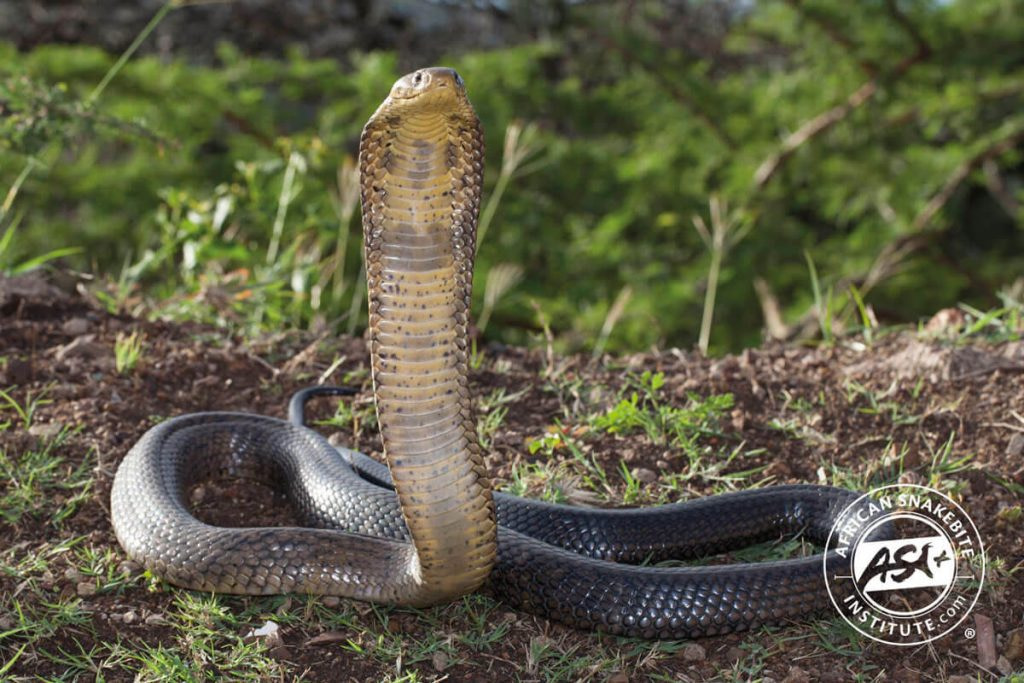
The Brown Forest Cobra (Naja Subfulva) is one of the largest cobras in Africa, reaching a length of 2.7m (8 feet) but average 140-220 cm (4-7). These cobras are glossy brown or black with a black tail and yellowish brown on the front half . The chin, throat and anterior region of the belly are cream or white.
The Brown Forest Cobra lives in coastal forest, woodlands and montane forests. Though it is terrestrial, it is also known to climb trees and swim in water. It is one of the most aquatic cobras. They feed on a variety of prey including small mammals, amphibians, birds, lizards and other snakes.
They are generally shy creatures, but if threatened, they will stand tall, make a narrow hood and hiss. Heed the warning! A bite from this snake is life-threatening as it is equipped with a strong venom. However, Brown Forest Cobras avoid humans, preferring to flee into thick vegetation.
Even though it is highly improbable that you would see a snake on your climb, it is still essential to be cautious. These five snakes in particular command respect so if you encounter them, or any snake, simply give them space.
But if you actually want to see snakes, we recommend visiting the Meserani Snake Park in Arusha, or, if you fly into Nairobi, the Nairobi Snake Park. Both parks will give you an excellent opportunity for an up close and personal look at these impressive creatures.
A very special thanks to the African Snakebite Institute (ASI) for sharing valuable information, photos and videos for this article. ASI is the leading training provider of Snake Awareness, First Aid for Snakebite and Venomous Snake Handling courses in Africa.






























































